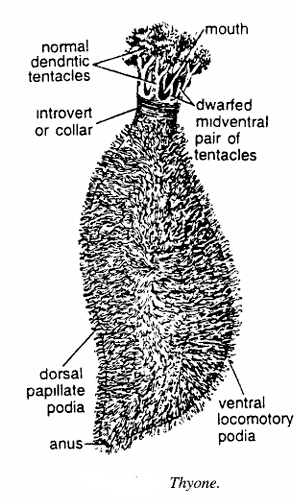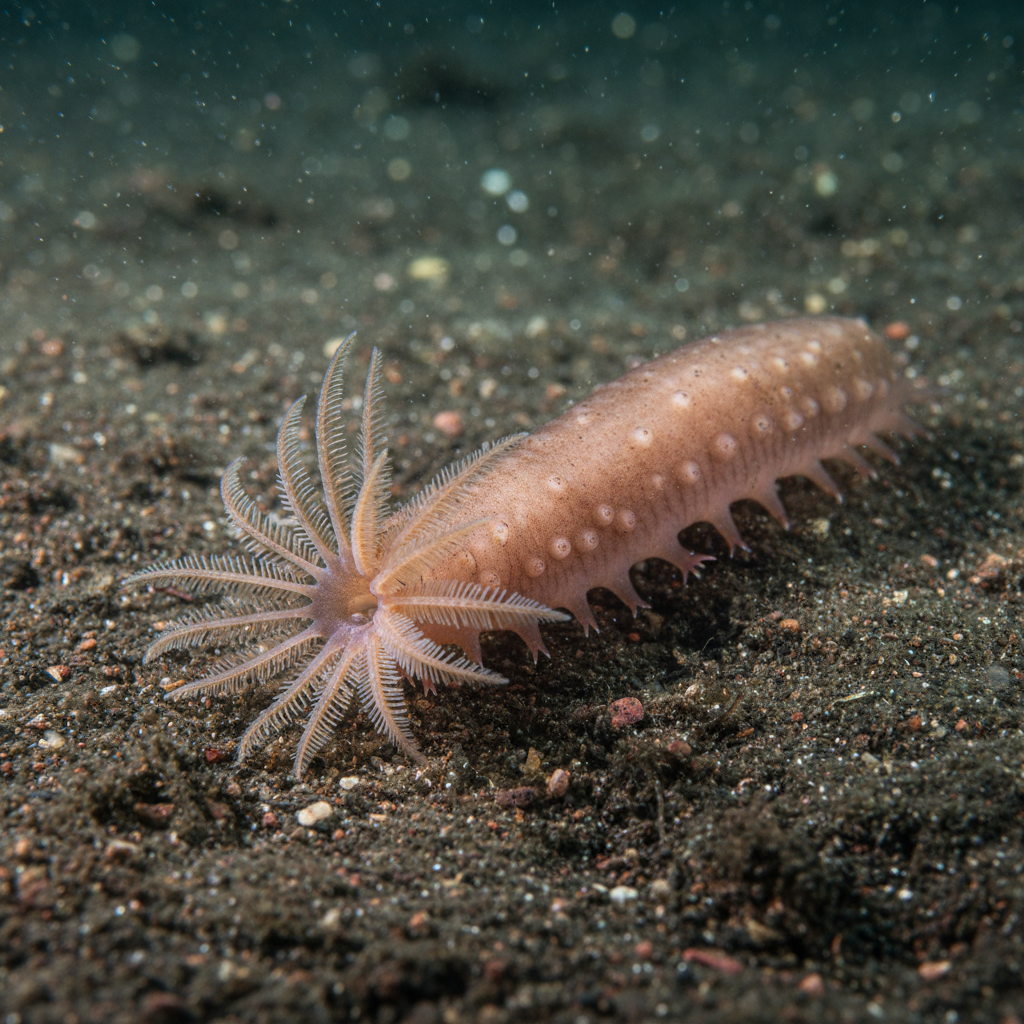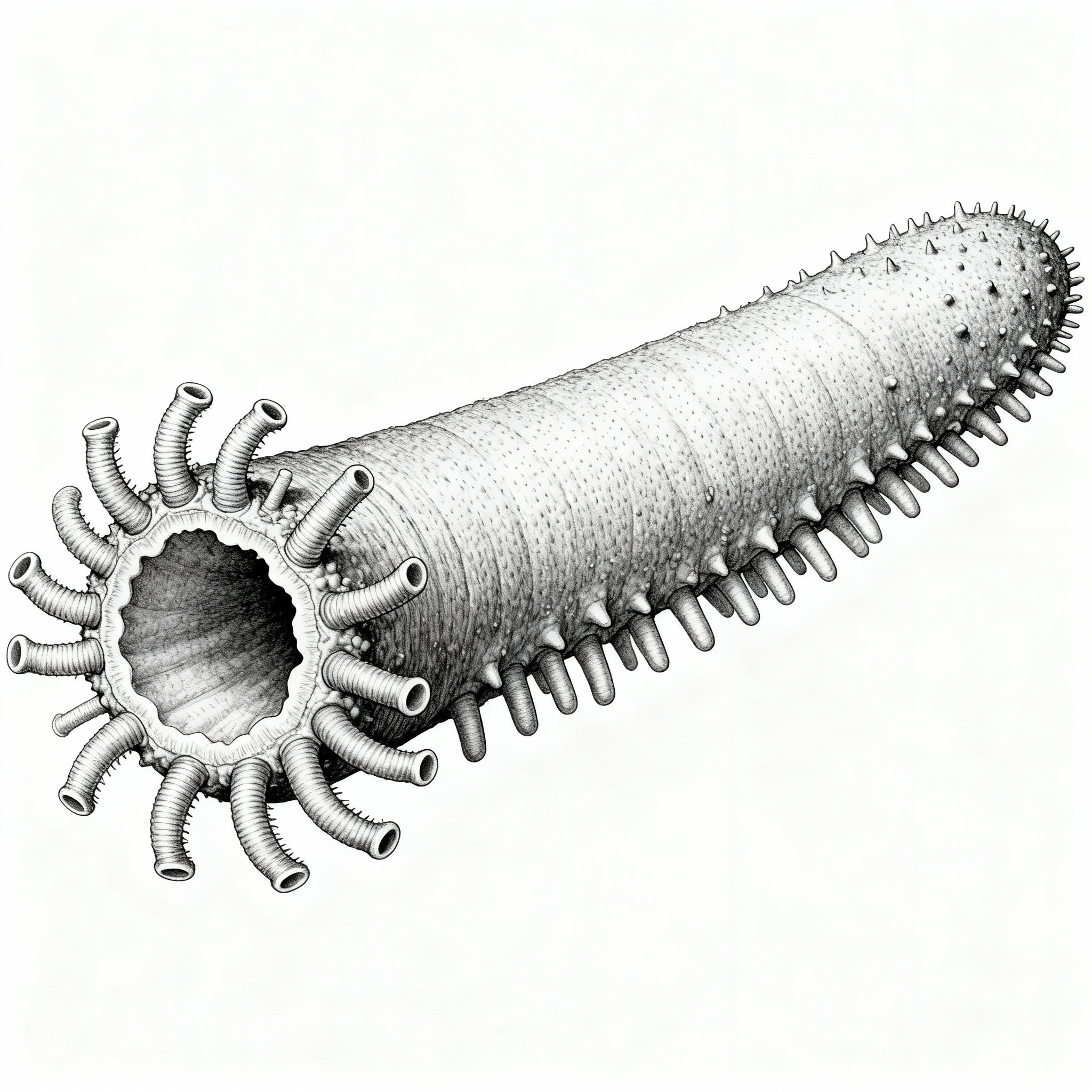Thyone: Detailed Overview of the Sea Cucumber Genus
Thyone is a genus of sea cucumbers belonging to the family Phyllophoridae within the class Holothuroidea. Species in this genus are characterized by their elongated and often oval bodies, branching oral tentacles, and soft leathery skin. Thyone species are suspension feeders prevalent mainly in the northeastern Atlantic Ocean and Mediterranean Sea, where they inhabit sheltered mud and shelly seabeds. They contribute to marine benthic ecosystems through their role in feeding and sediment interaction.
Classification of Thyone
| Taxonomic Rank | Name | Characteristic |
|---|---|---|
| Kingdom | Animalia | Multicellular, heterotrophic marine organisms |
| Phylum | Echinodermata | Marine animals with radial symmetry and calcareous ossicles |
| Class | Holothuroidea | Soft-bodied, elongated sea cucumbers with oral tentacles |
| Order | Dendrochirotida | Sea cucumbers with branched tentacles adapted for suspension feeding |
| Family | Phyllophoridae | Sea cucumbers often with leaf-like tentacles and soft skins |
| Genus | Thyone | Suspension-feeding sea cucumbers with branching feeding tentacles |

Habitat and Habit
Thyone species reside in sheltered marine environments ranging from shallow coastal areas to deeper seabeds, favoring muddy or shelly sediments. They are typically found buried with only their anterior feeding tentacles exposed to capture food particles from the water.
These sea cucumbers are suspension feeders, using their branched oral tentacles to catch plankton, organic detritus, and small organisms drifting in the current. They exhibit limited mobility but can move using tube feet arranged longitudinally along their bodies.
Geographical Distribution
The genus Thyone occurs mainly in the northeastern Atlantic Ocean including the coastal waters from Norway to Madeira and throughout the Mediterranean Sea. They are common along the British Isles, the east coast of Scotland, and Northumberland, inhabiting depths ranging from 10 to over 600 meters.

General Characteristics
- Commonly called as sea cucumber.
- Body is ovate or elongated.
- Oral end contains a large mouth, surrounded by 10 dendritic oral tentacles, which can be considerably extended.
- Tentacular region is followed by introvert.
- Colour may be dull brown or black or red above and whitish below.
- Body divided into ambulacral and interambulacral area.
- Tube feet are distributed over the entire body surface without definite arrangement in the ambulacral region.
- Respiratory trees present but cuvierian tubes absent. Haemal system simple.
- Haemocytes in the coelomic fluid contain haemoglobin. Stomach in the form of muscular sac.
- Water vascular system is present. Sexes are separate. Development includes Auricularia larva
- Body: Oval to elongated with soft leathery skin; smooth with few calcareous spicules.
- Tentacles: Typically ten branching oral tentacles, with a few ventral feeding tentacles shorter and forked for collecting food.
- Spicules: Usually table-shaped, aiding in body structure without heavy armor.
- Tube Feet: Few in number, arranged in longitudinal rows along the body.
- Coloration: Usually shades of brown, pink, or white.
- Size: Can reach up to 20 cm in length.
Special Features
- Thyone species enter a hibernation-like state during winter months when buried deeply in sediments, ceasing feeding and reducing metabolic activity until favorable conditions return.
- Their feeding behavior involves retracting each branch-like tentacle into the mouth sequentially to scrape off food particles.
- Their body composition includes calcium-rich spicules that provide structural support without compromising flexibility.
- Reproductive cycles are seasonal, with gonad development continuing during dormant periods and spawning occurring in early spring.

Behavior and Ecology
Thyone sea cucumbers contribute importantly to nutrient recycling in benthic environments through their suspension-feeding activities. By filtering organic particles and microorganisms, they maintain water quality and sediment health. Their hibernation strategy allows survival through unfavorable environmental conditions.
They serve as prey for various marine predators but have developed protective behaviors such as burrowing and limb retraction. Their seasonal reproductive cycles support population stability in temperate marine ecosystems.
References
- https://en.wikipedia.org/wiki/Thyone_fusus
- https://en.wikipedia.org/wiki/Sea_cucumber
- https://repository.si.edu/bitstreams/3e347b43-e6b5-4c15-a3b9-ab09138e5f96/download
- https://www.nationalgeographic.com/animals/invertebrates/facts/sea-cucumbers
- https://www.marlin.ac.uk/species/detail/136
- https://www.inaturalist.org/taxa/293194-Thyone-fusus
- https://bio-prd-naturekit-public-data.s3.ap-southeast-2.amazonaws.com/species_assessments/Thyone_nigra_15259.pdf
- https://www.jstor.org/stable/pdf/1648761.pdf
